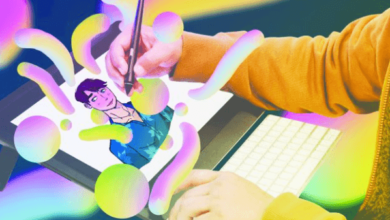Sustainability in Art: Eco-Friendly Materials and Practices

Introduction
Art has always been a reflection of society, capturing its values, struggles, and aspirations. In recent years, sustainability has become a global priority, and artists have responded by embracing eco-friendly materials and practices. The art world, traditionally reliant on resource-intensive processes, is now moving towards greener alternatives. From sourcing sustainable materials to adopting environmentally conscious methods, artists are redefining how art is created and consumed. This article explores the importance of sustainability in art, innovative eco-friendly materials, and practices that promote a more environmentally responsible artistic landscape.
The Importance of Sustainability in Art
Sustainability in art is not just a trend but a necessity in addressing the environmental challenges of our time. Traditional art-making processes can have a significant ecological footprint, from the extraction of raw materials to the disposal of non-biodegradable waste. By prioritizing sustainability, artists can minimize their impact on the planet while inspiring audiences to consider their relationship with the environment. Sustainable art also fosters innovation, pushing creators to explore new materials and techniques that align with eco-conscious values.
Eco-Friendly Materials in Art
One of the most impactful ways artists are promoting sustainability is through the use of eco-friendly materials. These materials reduce reliance on finite resources and minimize environmental harm.
Recycled materials have become a cornerstone of sustainable art. Artists are repurposing discarded items such as plastic, metal, and paper into unique creations. This not only prevents waste from ending up in landfills but also gives new life to materials that might otherwise be considered useless. For example, sculptures made from scrap metal or collages crafted from recycled magazines demonstrate how discarded objects can become sources of inspiration.
Natural and biodegradable materials are also gaining popularity. Plant-based pigments, beeswax, and organic fibers offer sustainable alternatives to synthetic paints and materials. Clay, wood, and stone, when sourced responsibly, are timeless and eco-friendly options for sculptors and ceramic artists. Some artists even experiment with materials like algae or mycelium (fungal networks) to create innovative, sustainable works.
Low-toxicity art supplies are another important aspect of eco-conscious art-making. Many traditional paints, solvents, and adhesives contain harmful chemicals that can pollute the environment and pose health risks. Eco-friendly alternatives, such as water-based paints and adhesives made from natural ingredients, provide safer options for both artists and the planet.
Sustainable Practices in Art Creation
Beyond materials, sustainable art involves adopting practices that reduce environmental impact. One of the simplest ways artists can practice sustainability is by conserving resources. This includes using materials efficiently, minimizing waste, and finding ways to repurpose scraps and leftovers.
Digital art is another avenue for reducing environmental impact. By creating and distributing art digitally, artists can eliminate the need for physical materials, transportation, and waste. Digital platforms also enable collaboration and sharing without the carbon footprint associated with traditional art shows and exhibitions.
Collaborative art projects often emphasize sustainability. Community-driven initiatives such as mural paintings or installations made from recycled materials encourage collective action and raise awareness about environmental issues. These projects often highlight the importance of working together to create positive change.
Using reusable materials is also a way to practice sustainable development. For example, Custom PVC Patches with environmental slogans as artistic materials not only echo the core aspirations of sustainable art but also represent an innovative strategy that combines conceptual expression with resource conservation.
Patches can be made from recycled materials, extending the material lifecycle at the source and reducing the consumption of new resources. The production cycle of patches is short and fast, and their small size and light weight significantly reduce carbon emissions during transportation and display. Furthermore, environmental slogans directly convey sustainable values through visual language, inspiring public resonance and reflection, transforming art into a social medium for promoting ecological awareness
Green energy in studios and galleries is also becoming a focus. Many artists and institutions are investing in renewable energy sources, such as solar panels, to power their spaces. Using energy-efficient lighting and tools further reduces the carbon footprint of art-making and exhibition.
Sustainable Art in Public Spaces
Public art often has a lasting impact on communities and can play a vital role in promoting sustainability. Installations made from recycled or natural materials draw attention to environmental issues and demonstrate how sustainability can be incorporated into urban spaces. Temporary installations, designed to decompose or blend back into the environment, offer an alternative to permanent works that may require significant resources to maintain.
Murals that incorporate eco-friendly paints and materials highlight the importance of responsible art-making. Public art projects often engage local communities, encouraging them to participate in sustainable practices and fostering a sense of environmental stewardship.
The Role of Art in Environmental Activism
Art has long been a tool for activism, and sustainability is no exception. Eco-artists use their work to challenge audiences, spark conversations, and inspire action on environmental issues. Installations that address climate change, deforestation, or pollution serve as powerful visual reminders of the challenges facing the planet. By creating emotionally resonant works, artists can motivate individuals and communities to adopt more sustainable lifestyles.
One notable example is the land art movement, which involves creating works in harmony with the natural landscape. Artists like Andy Goldsworthy use natural materials such as rocks, leaves, and ice to craft temporary installations that celebrate the beauty of the environment while leaving no trace behind.
Challenges in Sustainable Art
While the movement towards sustainability in art is gaining momentum, it is not without challenges. Eco-friendly materials can sometimes be more expensive or harder to access than traditional ones, limiting their availability to some artists. Additionally, transitioning to sustainable practices may require a significant investment of time and resources, particularly for artists who are accustomed to conventional methods.
Education and awareness are key to overcoming these challenges. By sharing knowledge and resources, artists and organizations can make sustainability more accessible to the broader art community. Public support, such as funding for eco-friendly art projects and materials, can also play a vital role in advancing sustainable practices.
The Future of Sustainability in Art
The future of sustainability in art lies in innovation and collaboration. Advances in technology are likely to yield new eco-friendly materials and techniques, making it easier for artists to adopt sustainable practices. Collaboration between artists, scientists, and environmentalists can lead to groundbreaking projects that address ecological challenges while pushing the boundaries of creativity.
Art institutions and galleries also have a role to play. By prioritizing sustainable exhibitions, sourcing green materials, and supporting eco-conscious artists, they can help lead the industry towards a more sustainable future. As audiences become increasingly aware of environmental issues, demand for sustainable art is likely to grow, encouraging more artists to adopt eco-friendly approaches.
Conclusion
Sustainability in art is a powerful movement that aligns creativity with environmental responsibility. By using eco-friendly materials, adopting green practices, and raising awareness through their work, artists are contributing to a more sustainable future. While challenges remain, the growing focus on sustainability within the art world is inspiring innovation and collaboration. As this movement continues to evolve, it has the potential to reshape not only the art industry but also the way society views its relationship with the environment.




